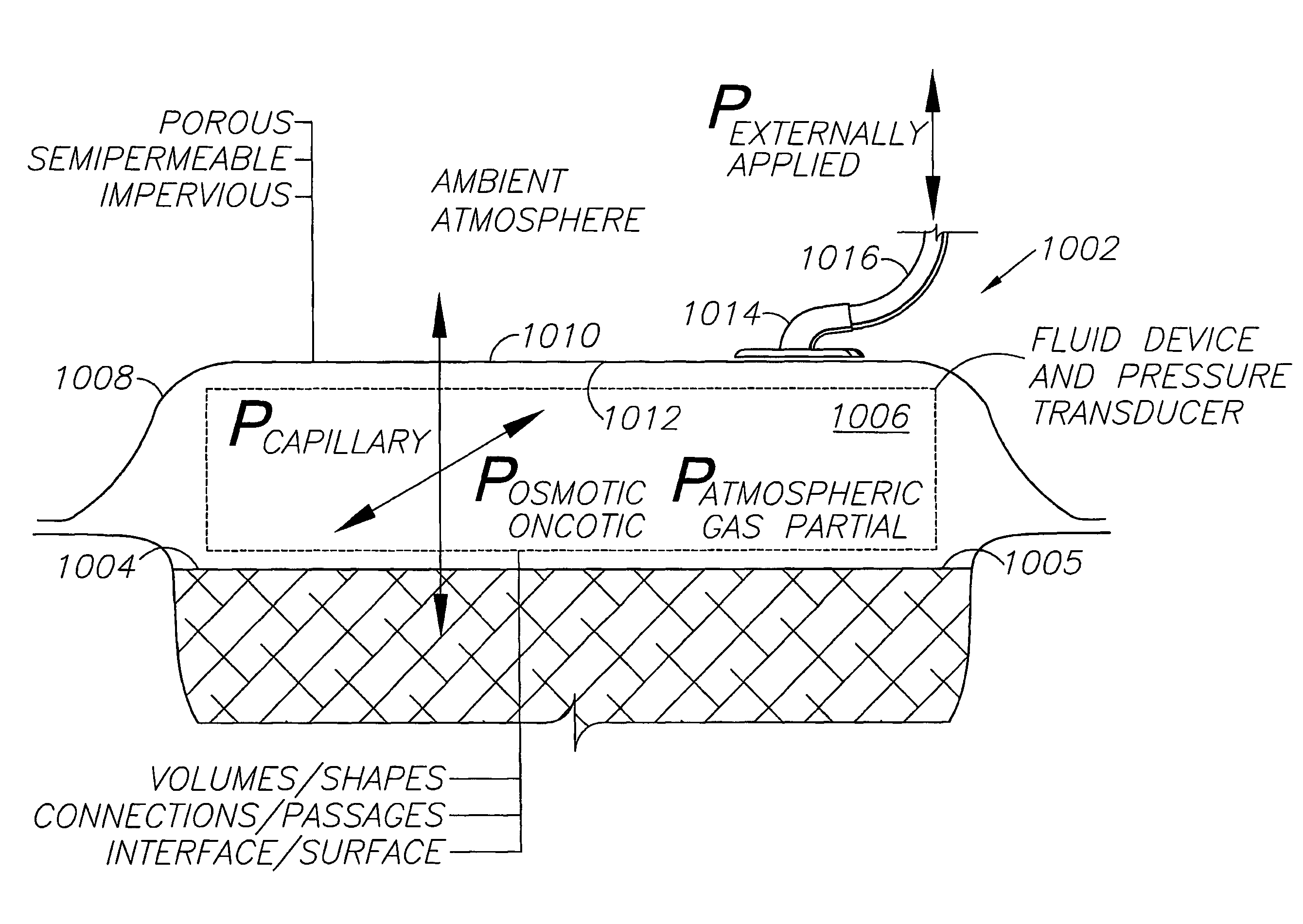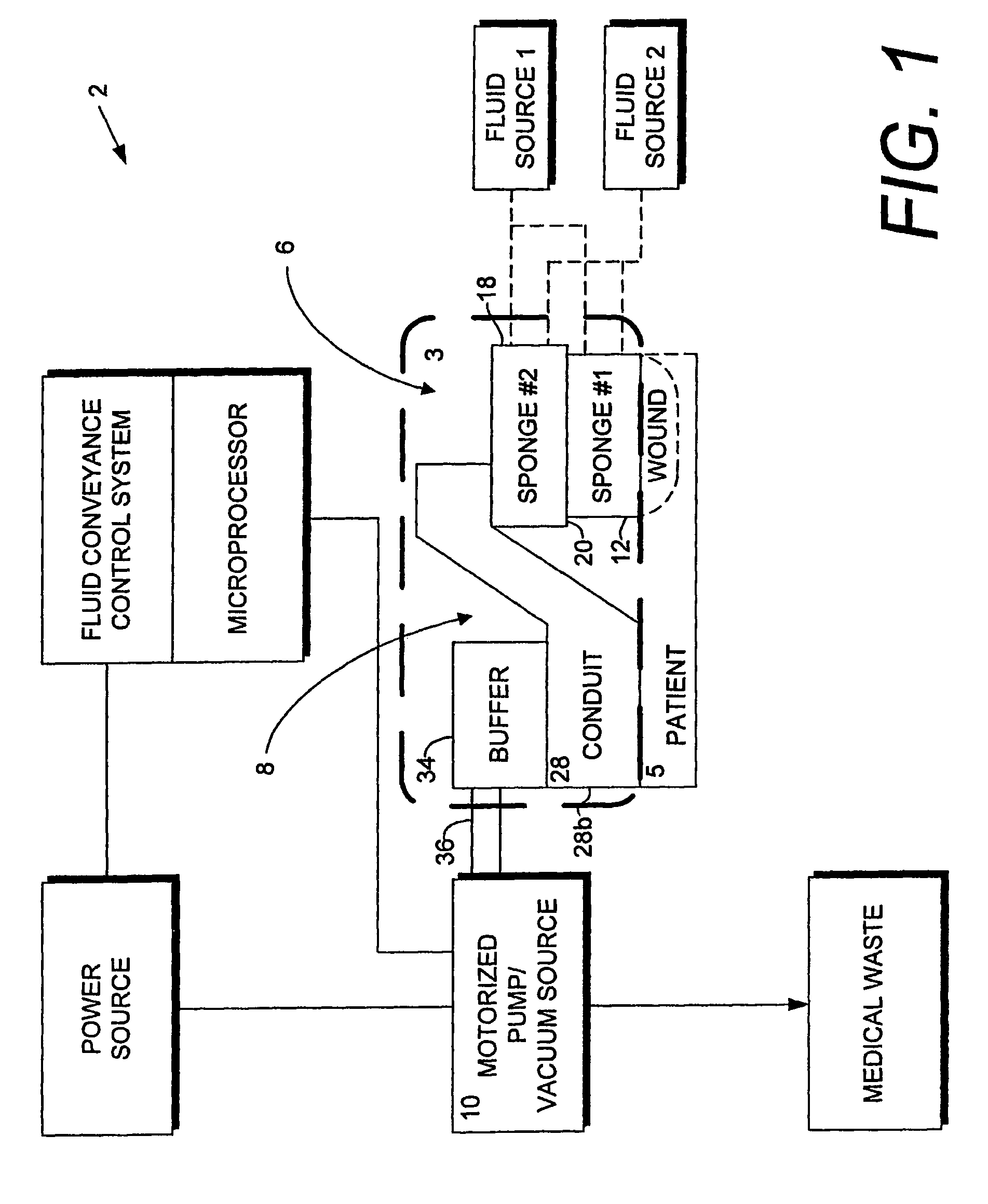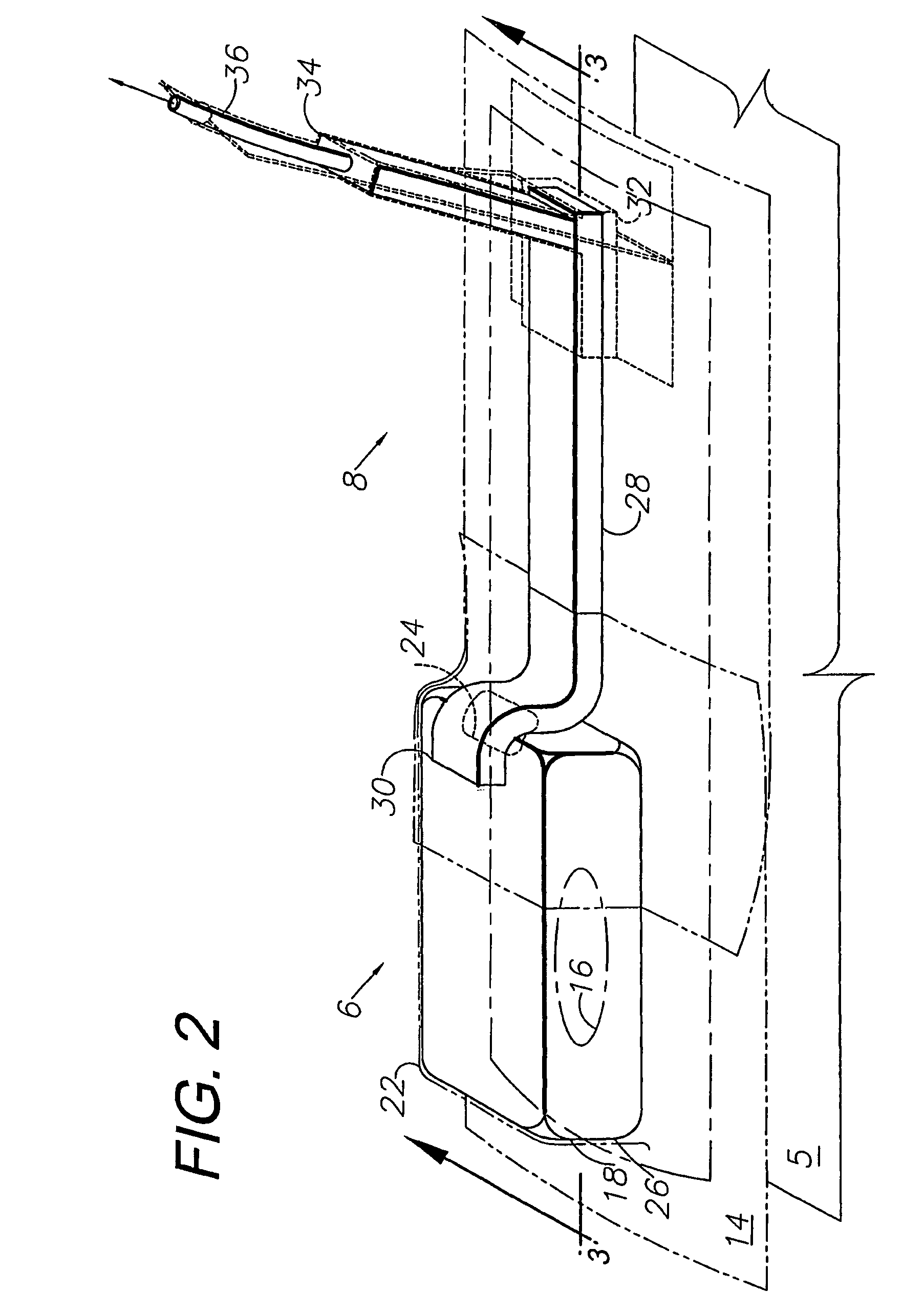Gradient wound treatment system and method
a wound treatment and gradient technology, applied in the field of medical care, can solve the problems of tissue breakdown and necrosis, bacterial overgrowth, and ineffective current tissue management and fluid drainage procedures,
- Summary
- Abstract
- Description
- Claims
- Application Information
AI Technical Summary
Benefits of technology
Problems solved by technology
Method used
Image
Examples
first modified embodiment
III. First Modified Embodiment Fluid Differentiating Wound
Dressing 53
[0074]A wound dressing 53 comprising a first modified embodiment of the present invention is shown in FIG. 4 and includes a liner 54 between the wound 4 and a first sponge 56, which can comprise a hydrophilic or hydrophobic material. The liner 54 passes fluid, but partially isolates and shields the wound tissue from the first sponge 56 to prevent the formation of spicules penetrating the open-passage first sponge 56. The liner 54 thus permits the first sponge 56 to comprise hydrophobic (e.g., PUE) material, even when spicule penetration is not desired.
second modified embodiment
IV. Second Modified Embodiment Fluid Differentiating Wound
Dressing 102
[0075]A wound dressing comprising a second modified embodiment of the present invention is shown in FIG. 5 and generally comprises a collector assembly 106 and a transfer assembly 108. The collector assembly 106 can be similar to the collector assembly 6 with a suitable composite construction. The transfer assembly 108 comprises an elbow connector 110 placed on top of a second sponge drape 112 covering the second sponge 114. The elbow connector 110 mounts the distal end 116 of a suction tube 118, which is also connected to a vacuum source 10. A first sponge drape 120 is placed over a first, hydrophilic sponge 122 and includes a central opening 123 communicating with the second sponge 114.
[0076]FIG. 5a shows an interface device 102a comprising a variation of the construction of the wound dressing 102. The device 102a utilizes a flexible, bellows-type tubing section 1 lOa in place of the elbow connector 110 describe...
fourth modified embodiment
VI. Fourth Modified Embodiment Fluid Differentiating Wound
Dressing 302
[0081]FIG. 9 shows a fluid differentiating wound dressing 302 comprising a fourth modified embodiment of the present invention. The dressing 302 includes a collector assembly 304 and a transfer assembly 306. The collector assembly 304 includes first and second sponges 308, 310. The first sponge 308 is mounted on the wound and can comprise, for example, a hydrophilic foam material as described above. The second sponge 310 can be mounted directly on the first sponge 308 (optionally separated by a drape) and can receive a tube 312 connected to a vacuum source. The second sponge 310 can include an overhang 313 extending beyond the first sponge 308 for providing a compression chamber 315 as described above. A drape 314 is placed over the collector assembly 304 and the tube 312. The drape 314 is folded over the tube 312 whereby same is spaced outwardly from the skin, thus providing an effective, fluid-tight seal around ...
PUM
 Login to View More
Login to View More Abstract
Description
Claims
Application Information
 Login to View More
Login to View More - R&D
- Intellectual Property
- Life Sciences
- Materials
- Tech Scout
- Unparalleled Data Quality
- Higher Quality Content
- 60% Fewer Hallucinations
Browse by: Latest US Patents, China's latest patents, Technical Efficacy Thesaurus, Application Domain, Technology Topic, Popular Technical Reports.
© 2025 PatSnap. All rights reserved.Legal|Privacy policy|Modern Slavery Act Transparency Statement|Sitemap|About US| Contact US: help@patsnap.com



